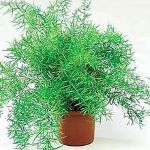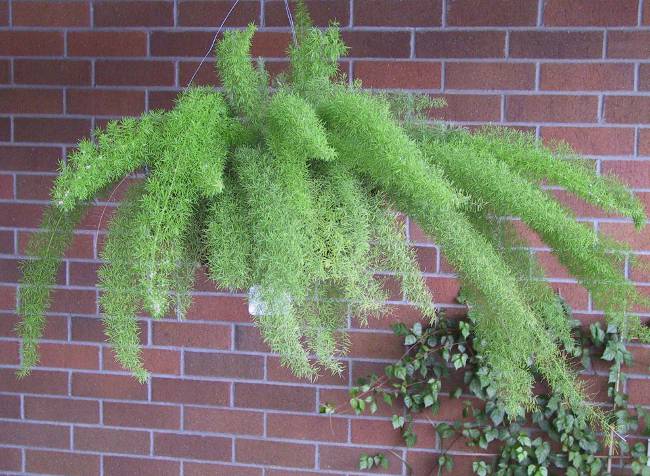Asparagus: Care and Reproduction
 Plant asparagus very popular among florists. Asparagus is much more often used for landscaping loggias and balconies. Aspagus sprigs are also used to create bouquets. And young shoots can be eaten. Here is such a unique asparagus! Care and reproduction this plant is the subject of this article.
Plant asparagus very popular among florists. Asparagus is much more often used for landscaping loggias and balconies. Aspagus sprigs are also used to create bouquets. And young shoots can be eaten. Here is such a unique asparagus! Care and reproduction this plant is the subject of this article. In nature there are a large number of asparagus species. Some of them are herbs, others -shrubs. Of course, it is impossible to grow all kinds of asparagus at home, since it will be very difficult for them to create the necessary conditions. But still those species that grow in our climatic zone, you will be quite enough.
There are several room asparagus: asparagus Meyer, asparagus pinnate, asparagus Sprenger, asparagus crescent and asparagus officinalis. All these plants differ from each other in the form of leaflets and in the way they form the bushes. But all asparaguses are easy to care for.
Asparagus: care
Asparagus room is unpretentious and grows very fast. New plants are easily accepted. But for asparagus, you still need to create certain conditions. To begin with, remember that asparagus does not like hot air. The ideal temperature of the content for it is 15-18 ° C. Make sure that the temperature does not rise above 25 ° C in summer. In winter, when asparagus will be in a rest period, it is better to lower the temperature a little, but not less than 10 ° С. The minimum temperature that asparagus tolerates is 7-8 ° C.
Asparagus requires proper lighting. Asparaguses prefer brightly lit places. They also adapt well to partial shade. Not all types of asparagus can grow under direct sunlight - only asparagus Sprenger. The rest of the plant species is best shaded. If your windows face west or east, then you can safely put asparagus on the windowsill. If the windows go to the south, then the plant is better to move a little deeper into the room.
If in winter you decide to leave asparagus in the room, then Do not place it near a battery or any other heating appliance. Not only will the air in this place be too warm, it will still be excessively dry. Because of this, asparagus can yellow leaves.
By the way, asparagus likes high humidity. To achieve these conditions, asparagus can beor often spray, or simply put the pot in a tray of water. If you chose the second option, then take care that the pallet was pebbles or expanded clay. These materials do not allow the water to evaporate too quickly.
Asparagus loves copious watering. In summer it is recommended to water the flower 2-3 times a week. But in winter it is desirable to cut irrigation. Try to keep the soil in a slightly wet state. For a plant this will be enough.
Together with watering, try to feed the plant. Like all other plants, asparagus should be fed in the summer in the period of its active growth. For asparagus, one feeding will be enough once a week.
Like any other flower, asparagus can bloom, after which small fruits are formed, in which the seeds ripen. Asparagus flowers are small, white. But when diluting asparagus at home, the plant blooms very rarely.
Asparagus: Reproduction
Asparagus grows very fast, so it can be propagated by dividing the bush. You can divide a bush during a transplantplants. It should be noted that asparagus is transplanted only in the spring, when the roots of the plant literally push the flower out of the pot. Since adult asparagus grow very quickly, they can be transplanted every year. But young plants can be transplanted every 2-3 years.
Also a very effective way of propagating this plant is by seeds. Seeds are sown in the soil in any month. Make sure that the top layer of the soil never dries up. To do this, the container with seeds is covered with a plastic bag. If you plant asparagus seeds during a short daylight, you will have to arrange additional lighting so that the sprouts do not stretch.














